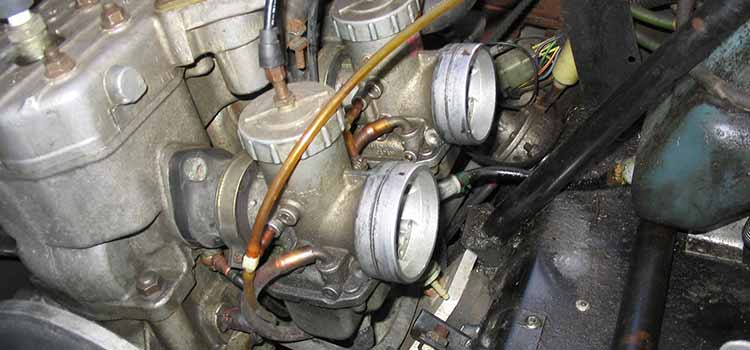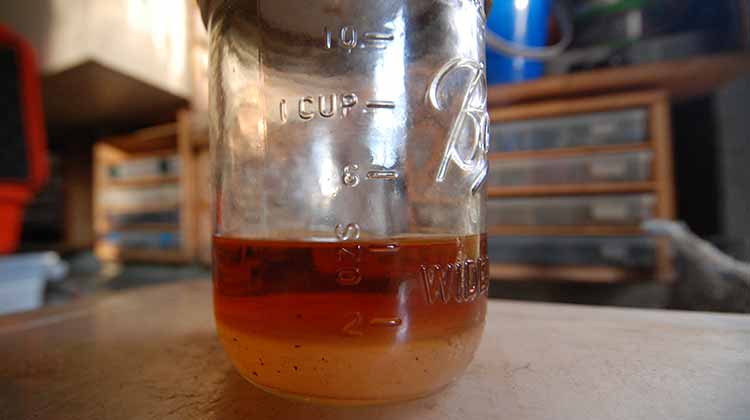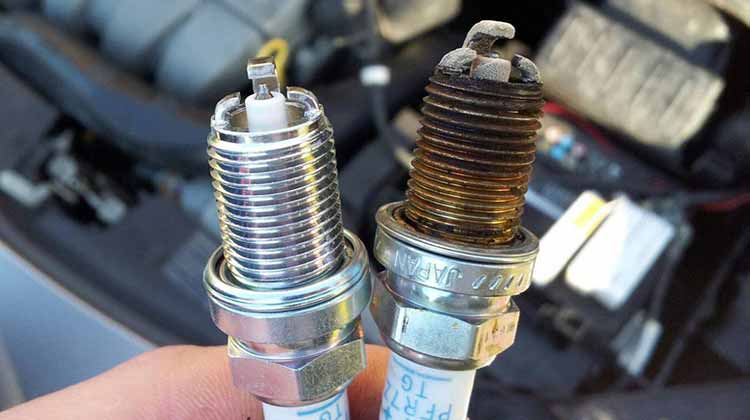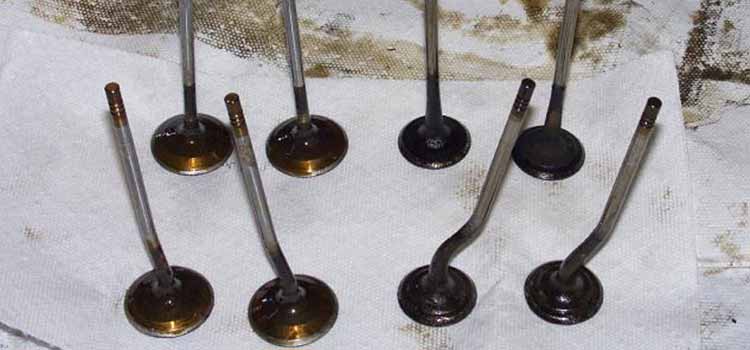
For a snowmobile, it is not uncommon to face backfires. Several reasons can cause a backfire in a snowmobile. Whatever the problem is. It must be solved as soon as possible. Let’s make it simple to understand why a snowmobile backfires.
A snowmobile backfires when it runs on a rich or lean mixture. It means the ratio of fuel and air is not balanced. When this unbalanced fuel mixture is supplied to the engine, the combustion does not happen properly. This uncombusted mixture reaches exhaust and burns there, which causes it to backfire.
When your snowmobile backfires, you may also notice a flame coming out of your exhaust pipe. Backfiring is a clear sign that something is not right in your snowmobile, and it should be fixed as soon as possible. There are some other reasons (other than an unbalanced mixture of fuel and air) that can cause backfires. I have mentioned them below with their fixes.
Mixture of fuel and air
Most common reason of backfiring is the unbalanced mixture of gas and air. If the gas mixture gets rich (more fuel) or lean (more air), the combustion will not take place efficiently and will cause the engine to backfire.
A single day of riding for a snowmobiler may vary from 2000 to 3000 feet in altitude. At higher altitudes, the air pressure decreases. It means the amount of oxygen per square feet is also decreased. The carburetor will continue to pull the same amount of fuel and air. But there will be less oxygen, which is not enough for combustion inside the combustion chamber.
Let’s say, you start your route at the bottom of a mountain, and cruise straight up to the side of the mountain. As you ride towards higher altitude, you will notice your snowmobile starts to bog down, and the engine will respond slowly to throttle. It is because the engine of your snowmobile is running too rich. So, a drastic change in altitude will also cause your snowmobile to backfire.
If your snowmobile runs idle on more than 2000 RPMs, your carburetor needs to be readjusted or needs rejetting.
Fix: Get your carburetor adjusted

There are jets and screws (in the carburetor) that determine the amount of fuel and air to be mixed. Over time, these jets lose their position and needs adjustment to function properly. Unfortunately, this can not be done at home if you are unexperienced in repairing auto-vehicles. You will need a mechanic who can adjust the valves to fix the fuel and air mixture. It will stop the engine from backfiring, and your snowmobile will be running smoothly again.
In a 2-stroke engine, a perfectly tuned carburetor will deliver a 12.5 to 1 ratio of air to fuel. When altitude changes, the air pressure decreases. The carburetor must be readjusted according to the air pressure, after every 2000 feet of altitude. The snowmobiles with EFI systems, there is no need to adjust any fuel or air composition. There is an electronic control module (ECM) that’s connected to sensors, including sensors for gas and air. This controller automatically adjusts the fuel ratio according to the atmosphere.
If your snowmobile’s carburetor is dirty or clogged up, then here is my complete article on how to clean a snowmobile carburetor.
Fuel Quality
If you do not use the recommended octane level gas, the fuel will not ignite properly, and it will leave the engine uncombusted, causing it to backfire. Many people prefer premium fuel for their snowmobiles because they think it will benefit their vehicle’s longevity. Premium fuel resists detonation, and it is not acceptable for an engine that is not designed for it.

There might be some impurities in your gas, like, water, or if your gas is old and it is sitting in the fuel tank for some time, there might be residues formed in the gas or fuel tank. When these residues or water gets mixed with the fuel and reaches the combustion chamber, they resist detonation. It will leave some gas unburned in the combustion chamber. When this mixture leaves the engine, it will cause backfires.
Fix: Use correct octane fuel recommended by the manufacturer.
For most snowmobiles, 87 octane is the best and recommended by most of the snowmobile manufacturers. Some high-performance snowmobiles require 92 octane. You can look into the user manual of your snowmobile to find out what is the recommended octane for your snowmobile’s engine.
There is a fuel filter installed on the hose that goes from the fuel tank to the carburetor. If your snowmobile does not have any fuel filter, adding one will filter out and prevent any impurities (in gas) going to the engine.
Damaged Ignition Coil or Stator

The ignition coil boosts the weak voltage from the stator or the battery to the high voltage and high current that is required for ignition. If the ignition coil does not make the amount of current that is required for combustion in the cylinder, the mixture of fuel and air will not ignite with the weak current. This uncombusted mixture will leave the engine through the exhaust. The hot grills inside the exhaust will burn that uncombusted fuel and cause a loud pop noise, also commonly known as backfire.
The ignition coil is connected with a stator that provides the primary current. The voltage coming out of the ignition coil is related to the stator, and if the stator is not working properly the ignition coil will output less voltage and current. So, if your ignition coil is good then there is a chance that your stator is broken.
The best way to check both (ignition coil + stator) is by swapping them one by one with a new or a known good one. But, it is not always possible due to the availability of both.
Fix: Check and replace the damaged coil
The best way to check both (ignition coil + stator) is by swapping them one by one with a new or a known good one. But, it is not always possible due to the availability of both.
The other way requires a digital multimeter that is at least capable of measuring resistance. Now follow the steps in the following video by Trail Tech.
By following this video you will be checking the continuity of the coils, the resistance of the coils, and if any of the coils is short. Generally, the resistance of the primary coil is between 0.2 to 0.6 ohms, and for the secondary coil, it is between 18 to 21 ohms. The exact value of resistance (for a good coil) can be found in the repair manual of your snowmobile.
If you find that the secondary coil is shorted or the resistance values of the coils do not match, the only solution is to replace the stator.
Now come to the ignition coil. Disassemble it and grab your multimeter again. Follow this video by BSK Garage.
The video will give you a general idea. The resistance values of the primary and the secondary coil may vary slightly more than those of the secondary coil. The exact resistance values are found in the repair/service manual of your snowmobile or on the internet.
If the values are off and you are sure that either one (or both) of the coils are damaged, the only fix is to change the failed one(s) with a new or a known good one.
Damaged spark plug and/or out of sync timing

The combustion in the engine happens when a spark is provided to the spark plug in the combustion chamber. This spark helps to ignite the fuel and air mixture in the combustion chamber. If the spark is weak or not enough to ignite the fuel, the ignition will not happen properly. It will leave some unburned mixture of fuel and air that will exit the engine and cause a backfire. The spark plugs may be corroded, wet, or may have damaged spark plug cables. Any of these problems could cause the spark plug to open sooner or later than expected. It can cause the fuel and air mixture to not ignite properly and exit the engine, causing backfire.
Fix: Replace the spark plug or check the spark plug cap and wiring
First, you will need to find the spark plug on your snowmobile. It is located under the hood and has thick black wires going to it. You will need to pull the spark plug cap off and then remove the plug by using the correct size socket. With time, the spark plug gets corroded, and the electrodes are eaten away by the high voltage spark happening between them. Therefore, every spark plug has a lifespan and must get replaced sooner or later. If your spark plug looks like it has carbon on its electrodes or the gap (between the electrodes) is wide then it should be. You will need to replace the spark plug. They are cheap and easily available. I recommend you to check your spark plug at every service and replace it if it is not in good shape.
There is a plug-cap made of a rubber-like material that connects that plug with the thick wire coming from the ignition coil. There is a big chance that the wire has gotten loose, and the connection between the plug cap and the wire is not good. Unscrew the plug cap and blow in it to remove any dust or debris. Connect the wire tightly by screwing the plug cap on it and connect the plug cap back to the plug until you hear a solid click. The plug cap must be changed if the terminals inside the plug-cap are old or rusted.
The wiring in your snowmobile can short out due to damaged insulation of the wire. A wire can get rubbed and frayed between two metal parts. If you are not familiar with the electrical system of your snowmobile, then call a mechanic. If the wire’s insulation is damaged, it must be wrapped with electrical tape to insulate it. Or, if the damage to the wire is not fixable, replace the whole wire. It will prevent other problems in the future due to the short circuit.
Also, there is a chance that you have removed the battery of your snowmobile and not taped the wire terminals properly. Check them and tape them.
Bent valve(s) inside your engine

A bent valve is not a very common issue that you will face. A valve controls the intake and exhaustion of the cylinder. The intake valve opens and lets the mixture of air and fuel from the carburetor to the cylinder. Then it shuts and remains shut during combustion. After combustion, the exhaust valve opens to let the exhaust fumes out of the cylinder. If any of these valves are bent, the chamber will not be closed. The mixture of gas and air will be allowed to flow back to the intake or to the exhaust, where it will cause a backfire.
Fix: Replace the valves
It is not a common issue, and it is the worst among all other reasons because it will damage the engine more than any other thing I mentioned in this article.
Changing the valves can be expensive because you will need to take your snowmobile to the repair shop, and the whole engine needs to get disassembled once. It is a technical job that most of us would not be comfortable doing ourselves. It is where we will need an experienced mechanic to do the job, so nothing else gets damaged when replacing the valves.
3 things you should do to prevent backfires in a snowmobile
Investing a little of your time on your snowmobile will save you a lot of time and money required for fixing it. Here are a few things that will prevent any backfires and keep your snowmobile smooth.
- The most important is the carburetor of your snowmobile, and it’s jetting. Many people prefer stock jetting. What they don’t know is that with time the valves, jets, and screws of the carburetor get loose, and the ratio of fuel and air gets altered. That’s why you should check the carburetor at every service of your snowmobile and adjust it if needed.
- I have seen few people who care about the fuel of their snowmobile, but in reward, they get a smooth ride with a long life of their snowmobile. The gas you are using must be according to the instructions in the user manual. The gas station from where you’re getting the fuel must be authorized. And do not use any additives because they damage the engine from inside.
- You should check your spark plugs and spark plug caps at every maintain. If the spark plug does not look good, replace it. The spark plugs must be changed when their lifespan is over. Due to some other factors, like a bad ignition coil, the life of the spark plug may be shortened. So, check them yourself.
- Keep an eye on the ignition system of your snowmobile. Look for any symptoms like bogging down the engine when accelerating or slow response to throttle, take it seriously, and check your ignition system. It includes the ignition coil, the stator, the wires connecting them.
- Before riding your snowmobile, let it run idle for a moment. It will heat the engine, and the engine will reach about 1500 to 1800 RPMs. After riding your snowmobile and before turning the ignition off, let your snowmobile run idle again for a moment.
What parts of your snowmobile are damaged due to backfiring?
Engine
When backfire happens the engine suffers the most. On top of the combustion chamber, there are valves to ensure the intake and outtake of the snowmobile’s engine. The mixture of fuel and air comes from the carburetor through the inlet valve, and after combustion, the gasses are released from the outlet valve. The valves are tightly fitted and sealed, so nothing escapes from the combustion chamber when it is not supposed to. A backfire damages the valves by causing them to bend in either direction, causing the seal to break. A bent or damaged valve will cause a leak, and the gas will not get compressed.
If your snowmobile keeps backfiring and you do not take any action to fix it, it can damage the valve springs or tappets too. In severe cases, the camshaft can get damaged, and the engine will start knocking.
Carburetor

The carburetor uses jets for the mixing of air with a fine spray of fuel (gas). The backfires on the intake will damage the carburetor, causing the jets or valves of the carburetor to get bent. The carburetor will not work like before as the ratio of fuel and air will be altered by bent or damaged parts.
Exhaustion system
The unburned fuel from the combustion chamber leaves the engine through pipes and the exhaust. This fuel, when burned inside the exhaustion system causes progressive damage. A strong explosion inside the exhaust can severely damage the exhaust manifold and can crack the girls or seals of the exhaust pipe. It will cause a noisy engine exhaust and even a burning smell from the exhaust.
In the end
I hope I have helped you to solve your problem and now your snowmobile is running smoothly. I have personally had a bad valve in my Polaris rush, and it was hard to find why my snowmobile was backfiring. After researching a lot and talking to experts, I have come to know all this. Few things must be checked regularly and maintained properly. This way, you will have more time snowmobiling and less time worrying about why your snowmobile is not running as it should be.